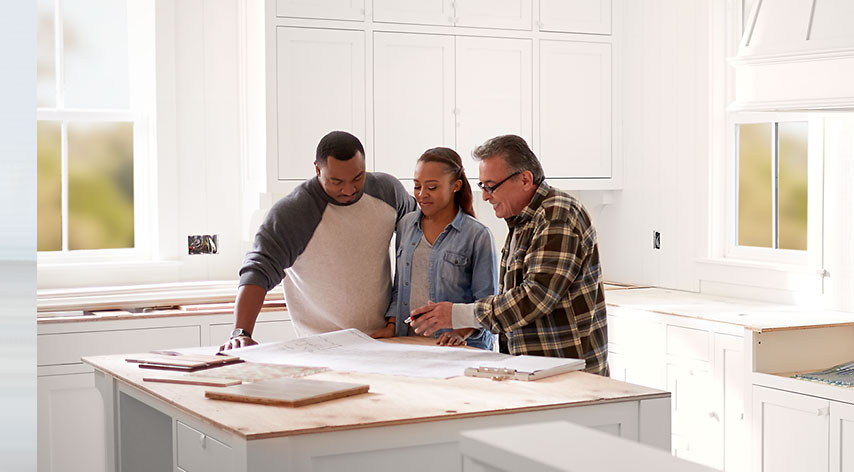Embarking on a home improvement project is an exciting endeavor, but it often comes with a significant financial commitment. Whether you’re renovating your kitchen, adding a new bathroom, or upgrading your landscaping, finding the right financing option is crucial. In this comprehensive guide, we’ll explore everything you need to know about home improvement loans rates, https://albritton-interiors.com/ empowering you to make informed decisions about your renovation plans.
Understanding Home Improvement Loans Rates
Home improvement loans rates refer to the interest rates associated with borrowing money specifically for home renovation projects. These loans are designed to provide homeowners with the funds they need to make upgrades and enhancements to their properties. Like other types of loans, home improvement loans rates can vary depending on several factors, including the borrower’s credit score, loan amount, and repayment terms.
Types of Home Improvement Loans
There are several types of loans available for home improvement purposes, each with its own set of terms and interest rates:
- Personal Loans: Personal loans are unsecured loans that can be used for a variety of purposes, including home improvement projects. These loans typically have fixed interest rates and repayment terms, making them a predictable option for borrowers.
- Home Equity Loans: Home equity loans allow homeowners to borrow against the equity in their homes. These loans often have lower interest rates compared to personal loans because they are secured by the property. However, failure to repay a home equity loan could result in the loss of the borrower’s home.
- Home Equity Lines of Credit (HELOCs): HELOCs are similar to home equity loans but operate more like a credit card. Borrowers can withdraw funds as needed up to a certain limit and only pay interest on the amount they use. HELOCs typically have variable interest rates, which can fluctuate over time.
- Cash-Out Refinancing: Cash-out refinancing involves replacing your existing mortgage with a new one that has a higher loan amount. The difference between the old and new mortgages is paid out to the homeowner in cash, which can be used for home improvements. Cash-out refinancing may offer lower interest rates compared to other options, but it also resets the term of the mortgage.
Factors Influencing Home Improvement Loans Rates
Several factors can influence the interest rates offered on home improvement loans:
Credit Score
A borrower’s credit score plays a significant role in determining their eligibility for a loan and the interest rate they receive. Generally, borrowers with higher credit scores are offered lower interest rates, as they are considered less risky to lenders.
Loan Amount and Term
The amount of money borrowed and the repayment term of the loan can also impact the interest rate. Larger loan amounts or longer repayment terms may result in higher interest rates to compensate for the increased risk to the lender.
Loan Type
The type of loan chosen for home improvement purposes can also affect the interest rate. For example, secured loans like home equity loans typically have lower interest rates than unsecured loans like personal loans.
Market Conditions
Interest rates in the broader financial market can also influence home improvement loans rates. Economic factors such as inflation, monetary policy, and market demand can cause interest rates to fluctuate over time.
Tips for Finding the Best Home Improvement Loans Rates
Shop Around
Don’t settle for the first loan offer you receive. Take the time to shop around and compare rates from multiple lenders to ensure you’re getting the best deal possible.
Improve Your Credit Score
If your credit score is less than stellar, take steps to improve it before applying for a home improvement loan. Paying down debt, making timely payments, and avoiding new credit inquiries can help boost your credit score and qualify you for lower interest rates.
Consider All Options
Explore all available financing options, including personal loans, home equity loans, HELOCs, and cash-out refinancing. Each option has its pros and cons, so weigh them carefully before making a decision.
Negotiate Terms
Don’t be afraid to negotiate with lenders to secure better terms on your home improvement loan. You may be able to negotiate a lower interest rate, reduced fees, or flexible repayment terms that better suit your financial situation.
Conclusion
In conclusion, understanding home improvement loans rates is essential for anyone considering a renovation project. By familiarizing yourself with the types of loans available, the factors that influence interest rates, and tips for finding the best rates, you can make informed decisions about financing your home improvements. Whether you opt for a personal loan, home equity loan, HELOC, or cash-out refinancing, carefully consider your options and choose the option that best fits your needs and budget.

